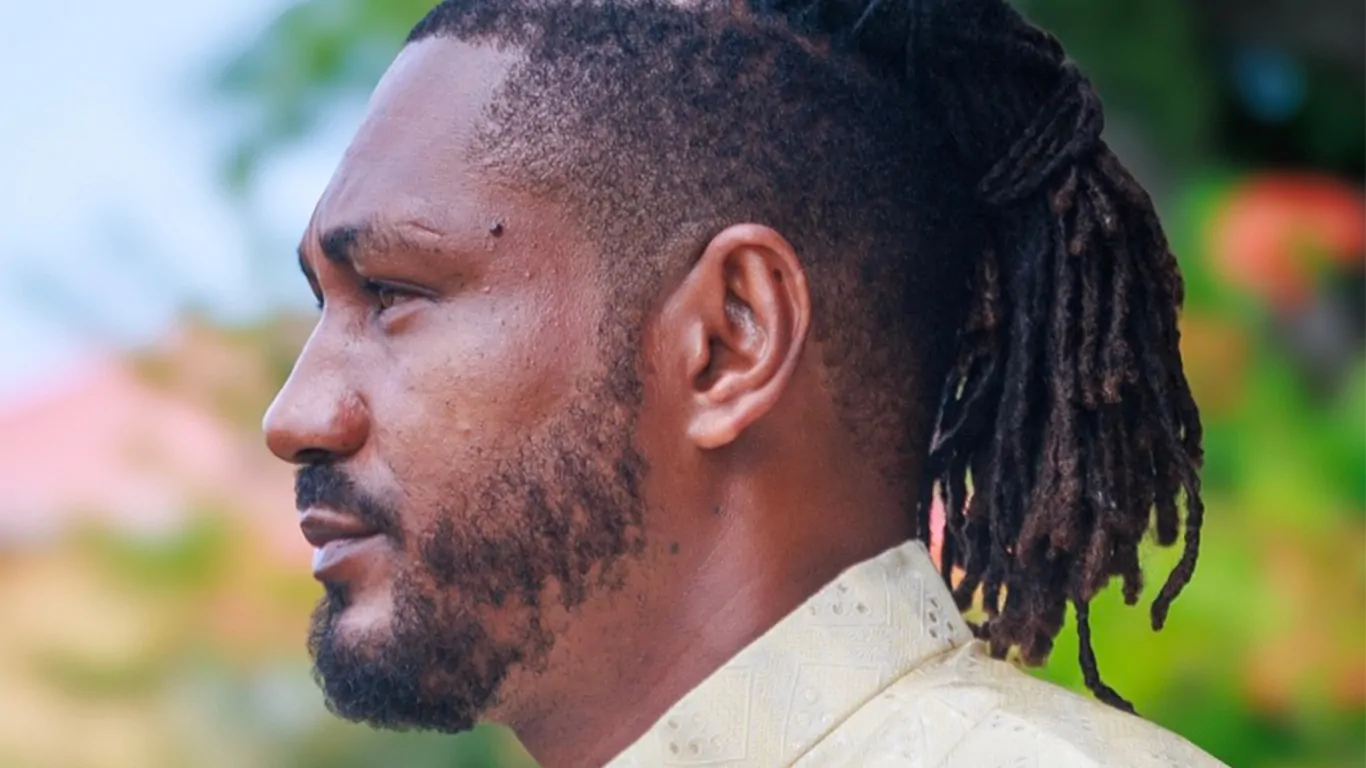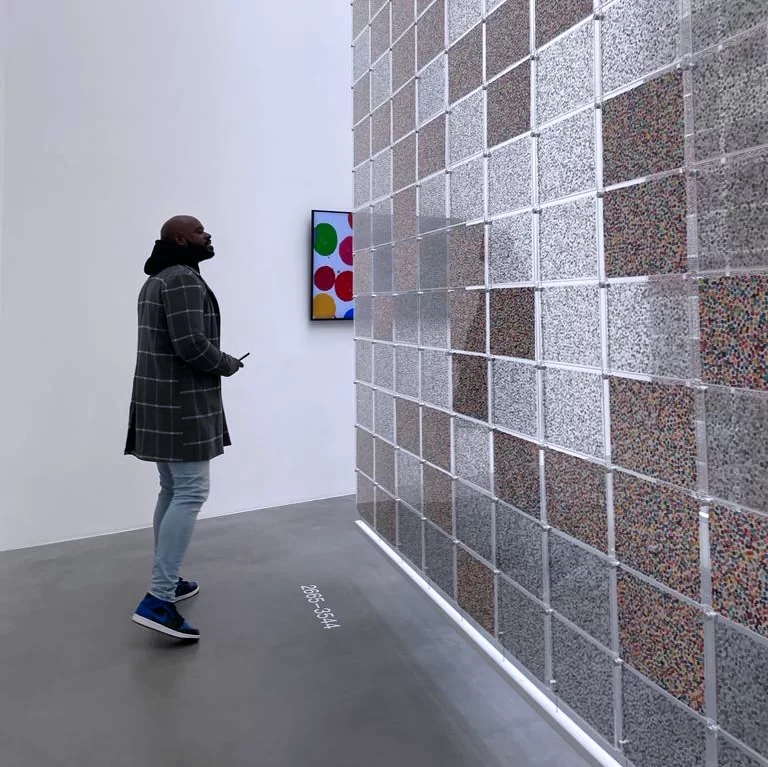The Saint Lucian muralist Sakey turns blank walls into living stories, blending ancestral memory with community participation and visions of the future.
When Naja Misaki Simeon returned to Saint Lucia after years abroad, he found few galleries willing to exhibit his canvases. Instead, he turned outward—to walls and street corners—founding what he called his “Outdoor Gallery.” From there, Sakey, the childhood nickname turned artistic persona, was born.
His murals, monumental in scale and layered with symbolism, were conceived as a way to bring art to places where it had been absent, transforming blank walls into sites of cultural memory. Each work functions as a modern-day petroglyph, carrying Saint Lucia’s oral traditions into a visual language that is both rooted in heritage and oriented towards the future.
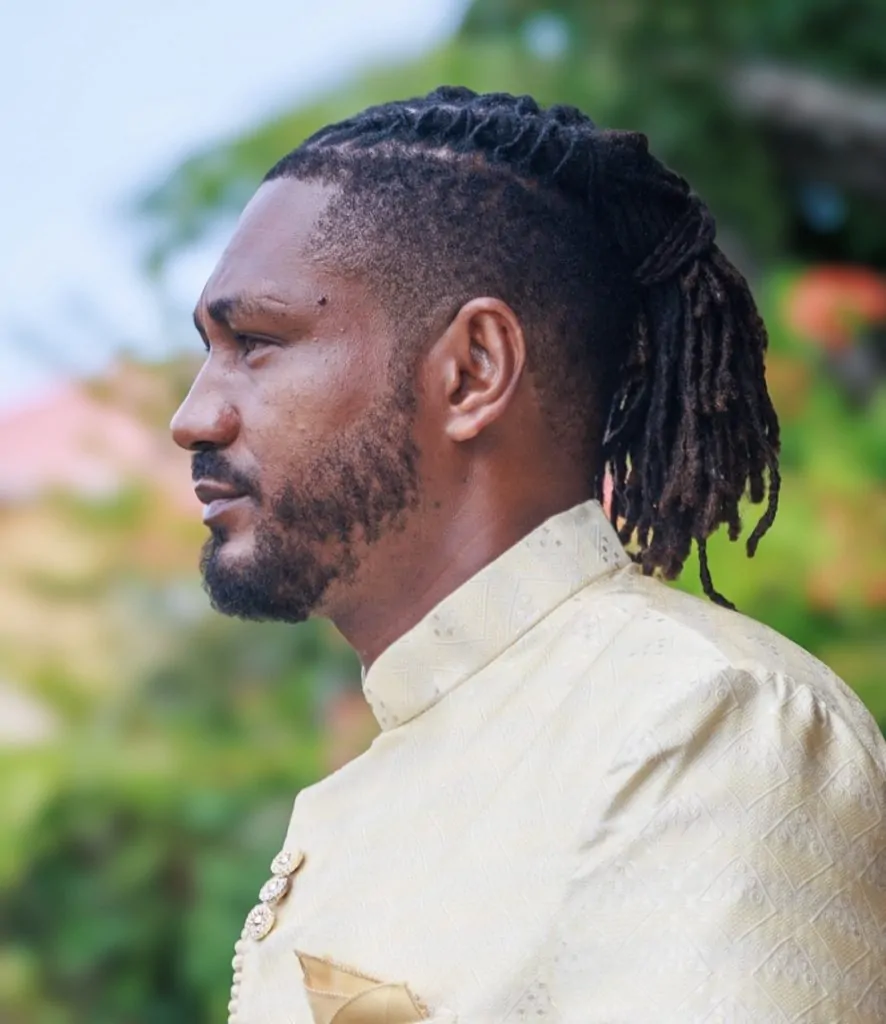
I consider my murals as modern-day petroglyphs. I want them to tell stories of our past, connect us to the present, and prepare us for the future
Naja Misaki Simeon aka Sakey
For Sakey, murals are not only acts of preservation but also of participation. Communities help shape the stories told on their walls, whether through the depiction of local figures or the involvement of young people in the painting itself. He regards the fact that more than a hundred murals across the island remain untouched by vandalism as evidence that when communities, especially the young, are invited to help build their environment, they will in turn protect it.
Educated in Visual Arts and Engineering Technology, and trained as a classical oil painter, Simeon exhibited in Louisiana, Texas, London, Port of Spain and across Saint Lucia before returning home. His style—bold lines and pure blocks of colour layered for depth—draws on ancestral petroglyphs while rejecting the traditional reliance on shading and modelling.
Limited access to art materials on the island initially pushed him towards murals, but over time that necessity evolved into a defining vision. Today, he collaborates with schools, institutions and organisations such as Harris Paints and the Caribbean Colour Authority, transforming villages into open-air galleries. Many of his works can now be viewed on walking tours through Castries.
As Saint Lucia contends with the pressures of tourism and digital representation, Sakey’s murals disrupt the familiar postcard imagery. His colours amplify the island’s natural beauty without flattening it, while also pointing towards new creative possibilities. He often reflects on how little art was visible in his community when he was growing up, and sees his murals as a way of providing the inspiration he once lacked—proof for younger generations that a career in art, and a voice through it, is possible.
You began your artistic journey in Saint Lucia, but studied and practised abroad before returning. What did you discover about yourself—and your work—through that movement between home and the wider world?
Sakey: On my return to the island, I recognised that there were no galleries that were willing to show my artwork. At that point, my art was very abstract and challenged the system about environmental pollution and how humans affected the environment. So, I decided to start what I called the “Outdoor Gallery”, and thus my mural career kicked off.
Travelling out of Saint Lucia gave me the overview effect and made me realise that my homeland had much to offer, and there were many opportunities to have an impact on society through art.
You work under the name “Sakey”—can you tell us the story or meaning behind that artistic name? What does it hold for you that “Naja Misaki Simeon” doesn’t?
Sakey: Sakey is a childhood name that was bestowed upon me by friends and family. It’s a shortened form of my name, “Misaki”. But it became more than a name. It became an identity, and when I went to university I transitioned to Sakey as an alter ego to explore my creative side. I still sign my full name on my studio works, but Sakey has definitely been my chosen persona for my mural work.
What draws you again and again to the mural form specifically? What can a public wall say that a canvas inside a gallery cannot?
Sakey: The murals are simply bigger and more effective at communicating my message than a smaller collector’s item, such as a small canvas. The aim became to “put paint where it ain’t” and broaden the reach of my art. The more public the artwork is, the more people it can reach.
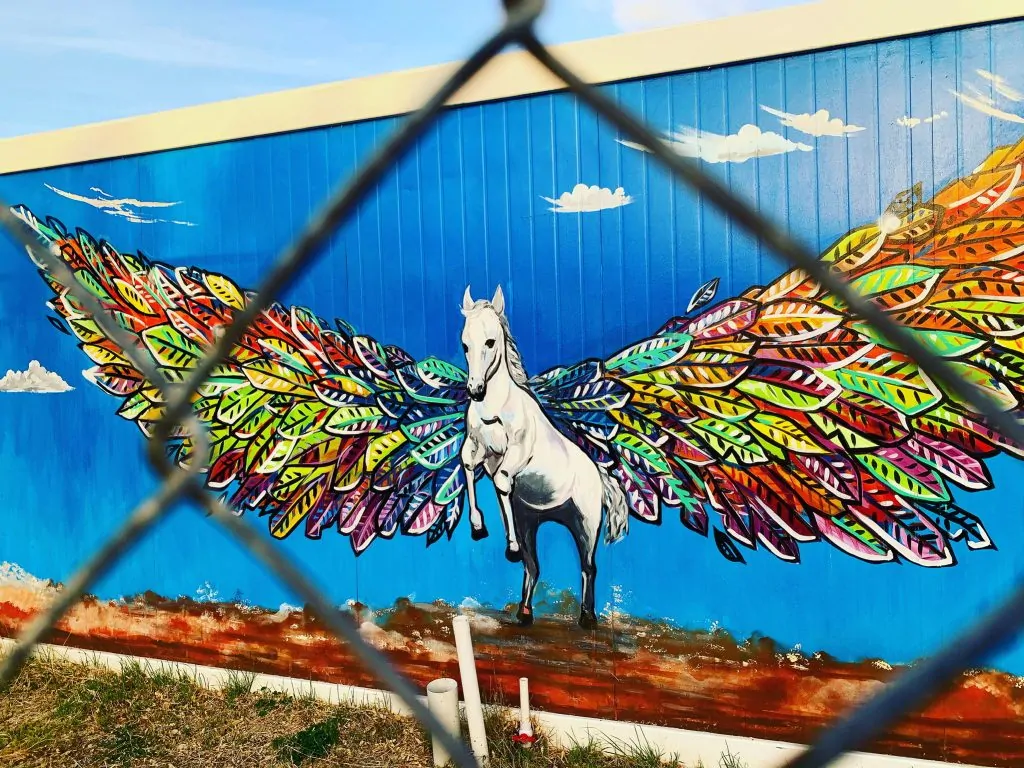
© Sakey
Your murals often feature both realistic and fantastical elements—winged figures, surreal landscapes, cultural iconography. How do you decide which stories belong in a particular space?
Sakey: I consider my murals as modern-day petroglyphs. I want them to tell stories of our past, connect us to the present, and prepare us for the future. The theme is based on the environment the mural is placed in and the message I want to translate to the viewers.
Saint Lucia’s landscapes and oral histories appear vividly in your work. How do you balance honouring those traditions while still pushing your visual language forward?
Sakey: The balance is natural. We are a culture of oral storytelling. My visual storytelling is a refreshing take on sharing our history and culture.
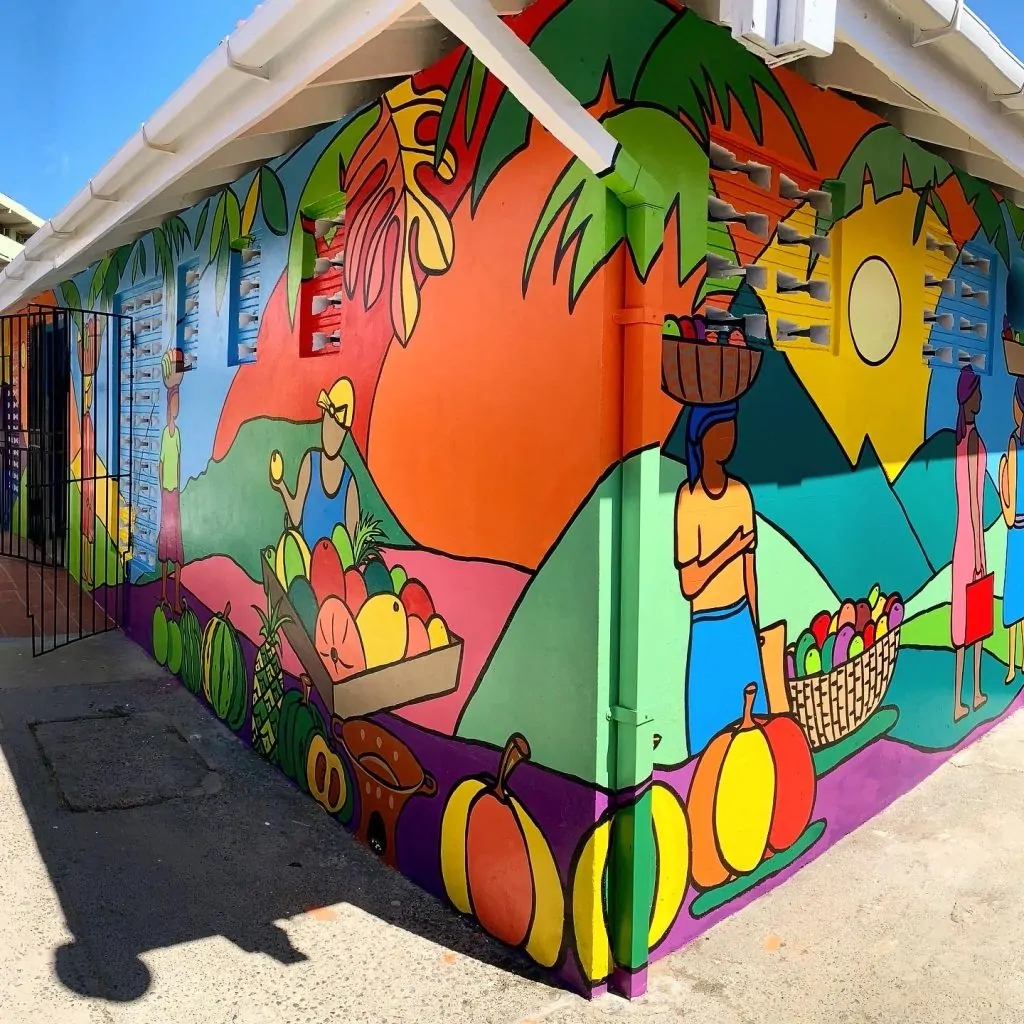
© Sakey
Your art seems to be an act of cultural preservation. Do you feel a sense of urgency in telling Saint Lucia’s stories through visual art? What do you fear might be lost if they aren’t told?
Sakey: There is definitely an urgency, and my aim is to build a team of young artists who can express themselves through art, share their culture, and bring beauty to their communities through murals and other art forms.
You’ve involved Saint Lucian youth in many of your public art projects. What have they taught you—as both a mentor and a fellow artist?
Sakey: The youth are the future, and with the arts they can now have a voice to tell their story. Since I have included the youth in the arts (both local and international), they have now taken charge of beautifying and transforming their communities instead of destroying them. Out of over 100 murals, none have been defaced by graffiti. This is a testament that if you involve the youth in building their community, they gain a better appreciation for it and preserve it instead of destroying it.
You once said your goal is to ‘tell the story of the people.’ How do you gain the trust of a community when painting in a space that holds their daily lives?
Sakey: That’s the easy part. I let them tell the story. I just give them the tools and the expert advice on how to do it. I also tell stories of the past. The murals usually highlight community leaders, cultural icons, national heroes, or major events in that community.
When you begin a new mural, where does the process start—on paper, in conversation, or in the space itself?
Sakey: The mural normally begins with a conversation, and then a site visit follows. Some murals are completely spontaneous.
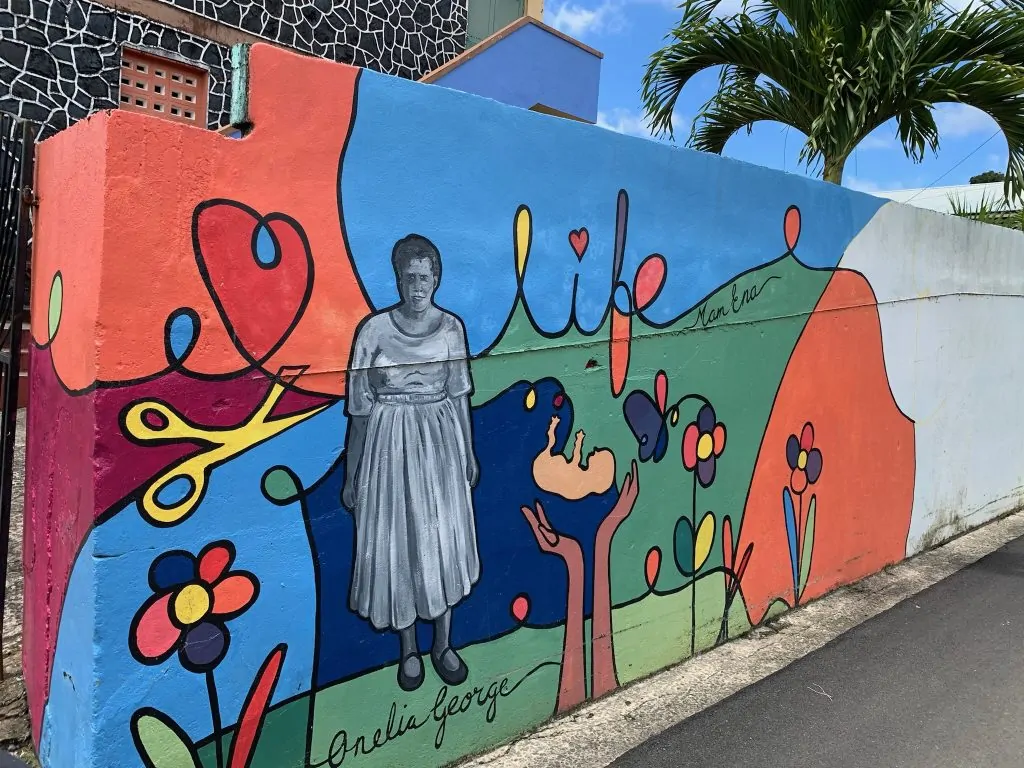
© Sakey
With the rise of tourism and digital media, Saint Lucia is often photographed through a very narrow lens. Do you feel your art disrupts that tourist gaze?
Sakey: I feel my art has evolved to complement the natural beauty of Saint Lucia. It is not fully detailed and not fully abstract, but it brings the perfect amount of colour and saturation that commands attention from the viewer, yet does not distract from the landscape or architecture in the background.
What would you like a child walking past your mural in 20 years to feel—not just about the art, but about their own story and place in the world?
Sakey: I want them to feel that they are part of the art. I also want them to feel inspired to create art of their own and be confident that they can become an artist and have a voice and a career in the arts.
…When I was a child, there was very little art in the community, there were very few established artists, and art was not a career path that was encouraged. Actually, it was discouraged, and you were advised to do something more lucrative such as teaching or becoming a police officer. I want my murals to be the motivation that a young artist needs to know that you can have a successful career as an artist…
©2025 Sakey


